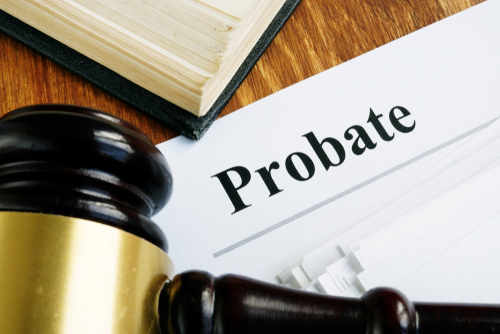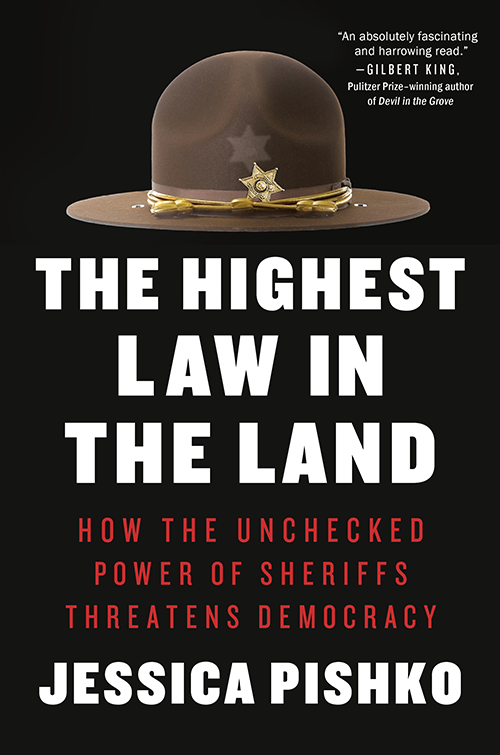Chemerinsky: This SCOTUS term moved the law 'dramatically in a conservative direction'

Erwin Chemerinsky. Photo by Jim Block.
The U.S. Supreme Court's October 2021 term was one of the momentous in history. The only analogy I can think of is 1937 for its dramatic changes in constitutional law. This is the first full term with Justice Amy Coney Barrett on the high court, and we saw the enormous effects of having a 6-3 conservative majority.
The October 2021 term by the numbers
In the October 2021 term, the Supreme Court decided 60 cases after briefing and oral argument. That is slightly more than the 53 and the 54 from the prior two years but still significantly less than it used to be.
Of the 60 cases, 19 were decided 6-3, and nine were decided by a 5-4 margin. Only 29% were unanimous, the smallest in recent memory. Chief Justice John Roberts and Justice Brett Kavanaugh were most often in the majority, in 95% of the cases. Justice Sonia Sotomayor was least often in the majority, in just 58% of the decisions.
Moving the law dramatically in a conservative direction
But these numbers hide the reality: Virtually every major case was resolved in a conservative direction. According to an analysis by the New York Times, this was the most conservative term since 1931. The court’s rulings were on some of the most divisive issues in American society, and in each, the court divided ideologically and moved the law sharply to the right.
Abortion: This term will be most remembered for the June 24 ruling in Dobbs v. Jackson Women’s Health Organization. The Supreme Court overruled Roe v. Wade and Planned Parenthood v. Casey and held that no longer does the Constitution protect a woman’s right to abortion prior to viability. The issue of abortion is now left to the political process, with each state able to decide for itself whether to allow abortions or to prohibit some or all abortions. Also, Congress could adopt a law creating a national right to abortion or forbidding all abortions.
Justice Samuel Alito wrote the opinion for the court, which was joined by Justices Clarence Thomas, Neil Gorsuch, Kavanaugh and Barrett. The court said Roe was “egregiously wrong” and “exceedingly weak.” Alito’s majority opinion said a right should be protected under the Constitution only if it is in the text or was part of its original meaning or if there is a clear, unbroken historical tradition. Abortion, the court said, does not meet these criteria.
Roberts concurred in the judgment. He would have upheld the Mississippi law that prohibits abortions after the 15th week of pregnancy but without reaching the question of whether to overrule Roe.
Justices Stephen Breyer, Elena Kagan and Sotomayor wrote a joint dissent. They defended Roe and lamented the court’s disregard for precedents. The dissenters stressed the impact of the court’s decision on women’s lives and concluded their opinion, “In overruling Roe and Casey, this court betrays its guiding principles. With sorrow—for this court, but more, for the many millions of American women who have today lost a fundamental constitutional protection—we dissent.”
Religion: In two decisions, the court strongly protected free exercise of religion but gave little, if any, weight to the establishment clause of the First Amendment. Carson v. Makin involved a Maine law that applies in areas that are too rural to support public school systems. In these areas, school administrative units provide funds for parents to send their children to private schools. Maine requires that the money be used in secular, not “sectarian” schools. Maine says its goal is to provide a free, secular education for every student.
The Supreme Court, in a 6-3 decision split along ideological lines, ruled in favor of the challengers and concluded that Maine violated free exercise of religion in not subsidizing parochial school education. Roberts wrote the opinion for the court and held that whenever the government financially supports secular private schools, it is constitutionally required to subsidize religious education.
The other case about religion was Kennedy v. Bremerton School District. Joseph Kennedy, a football coach at a public school in Bremerton, Washington. There was significant disagreement between the majority and the dissent over the facts.
After games, Kennedy, a self-described devout Christian, would kneel at the 50-yard line engage in a prayer for about 30 seconds. Over time, Kennedy began giving short Christian motivational speeches at midfield after the games. Students, coaches and other attendees from both teams participated. The school district ordered that Kennedy cease his religious activities. He initially complied and then openly defied the order and was suspended.
The Supreme Court, in another 6-3 decision, ruled that Kennedy’s constitutional rights to free exercise of religion and freedom of speech were violated. Gorsuch wrote the opinion for the court and declared: “Respect for religious expressions is indispensable to life in a free and diverse republic—whether those expressions take place in a sanctuary or on a field, and whether they manifest through the spoken word or a bowed head.”
At the very least, this decision means that a teacher—before the school day, during recess, at lunch, after school—may engage in prayer, and it is fine for students to join. This departs from 60 years of precedents, which had firmly prohibited prayer in public schools.
Also, the Supreme Court overruled its 1971 decision in Lemon v. Kurtzman, which held that the government violates the establishment clause if it acts with the purpose of advancing religion or its primary effect to advance or inhibit religion or if there is excessive government entanglement with religion.
Administrative law: The most important decision about administrative law came down on the last day of the term in West Virginia v. Environmental Protection Agency, which involves the authority of the EPA to regulate power plants to limit their greenhouse gas emissions from coal-fired power plants.
In a 6-3 decision, the court held that the EPA was limited in its ability to regulate greenhouse gas emissions from power plants because Congress had not been sufficiently specific in granting this power in the Clean Air Act. The court said that the authority to regulate greenhouse gas emissions from power plants is a “major question,” and that when there is a major question, there must be explicit statutory provisions giving the federal agency the power to act. Roberts, writing for the court, declared that, “something more than a merely plausible textual basis for the agency action is necessary. The agency instead must point to ‘clear congressional authorization’ for the power it claims.”
The decision is significant in limiting the ability of the EPA to deal with the urgent problem of climate change. It also opens the door to challenges to countless federal laws that empower federal agencies to deal with issues, including those involving public health and safety. The court says that Congress must be specific in authorizing agency action when there is a “major question,” but never has the court defined what is a major question or what is sufficiently specific to meet this requirement.
Second Amendment: New York State Rifle & Pistol Association Inc. v. Bruen involves a New York law, initially adopted in 1911, that prohibits having weapons in public without a permit. If a person wants to carry a firearm outside the home or place of business for self-defense, the applicant must obtain an unrestricted license to “have and carry” a concealed “pistol or revolver.” To secure that license, the applicant must prove that “proper cause exists” to issue it. New York courts have interpreted this to require that a person “demonstrate a special need for self-protection distinguishable from that of the general community.”
In a 6-3 decision, with the majority opinion written by Thomas, the court declared the New York law unconstitutional. The court was explicit that “the Second and 14th amendments protect an individual’s right to carry a handgun for self-defense outside the home.” The court held that state laws are unconstitutional if they restrict having concealed weapons to those who show cause.
The emphasis on history
In these and other cases, the court made clear that the meaning of a constitutional provision by the historical understanding and practices when it was adopted. For example, in striking down the New York gun law, the court declared: “To justify its regulation, the government may not simply posit that the regulation promotes an important interest. Rather, the government must demonstrate that the regulation is consistent with this nation’s historical tradition of firearm regulation. Only if a firearm regulation is consistent with this nation’s historical tradition may a court conclude that the individual’s conduct falls outside the Second Amendment’s ‘unqualified command.’” Thomas wrote, the Second Amendment “is the very product of an interest balancing by the people,” and it “surely elevates above all other interests the right of law-abiding, responsible citizens to use arms” for self-defense. This will make gun regulations of all sorts open to constitutional challenge.
Similarly, in ruling in favor of the high school football coach, the court said that meaning of the establishment clause must be interpreted by “reference to historical practices and understandings.” The line that courts and governments “must draw between the permissible and the impermissible” has to “accor[d] with history and faithfully reflec[t] the understanding of the Founding Fathers.”
The court in these, and other cases, embraced originalism in determining the meaning of the Constitution. The liberal justices strongly disagreed with this methodology, as well as the results.
In conclusion
These are only a few of the major decisions from the term. And next year portends more blockbuster rulings, as the court already has on the docket cases about whether to overrule precedents allowing colleges and universities to engage in affirmative action, whether a business has a right to discriminate and refuse to provide services to same sex couples, and whether only state legislatures may make rules for state elections.
At a time when the country is deeply politically polarized, the Supreme Court has emphatically come down on one side of this divide. It is unclear what this will mean in the long term for the court’s legitimacy of American society.
Erwin Chemerinsky is dean of the University of California at Berkeley School of Law. He is an expert in constitutional law, federal practice, civil rights and civil liberties, and appellate litigation. He’s the author of several books, including The Case Against the Supreme Court (Viking, 2014) and The Religion Clauses: The Case for Separating Church and State, written with Howard Gillman (Oxford University Press, 2020). His latest book is Presumed Guilty: How the Supreme Court Empowered the Police and Subverted Civil Rights (Liveright, 2021).
This column reflects the opinions of the author and not necessarily the views of the ABA Journal—or the American Bar Association.



